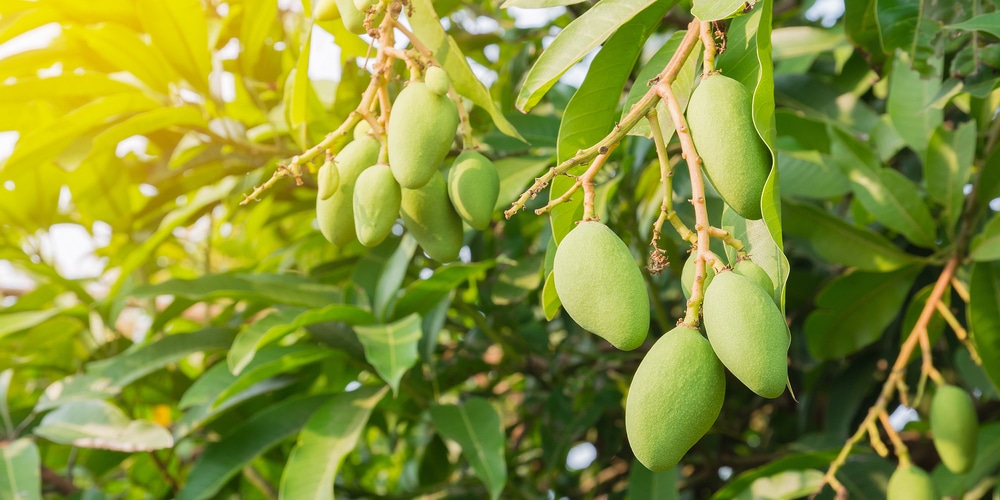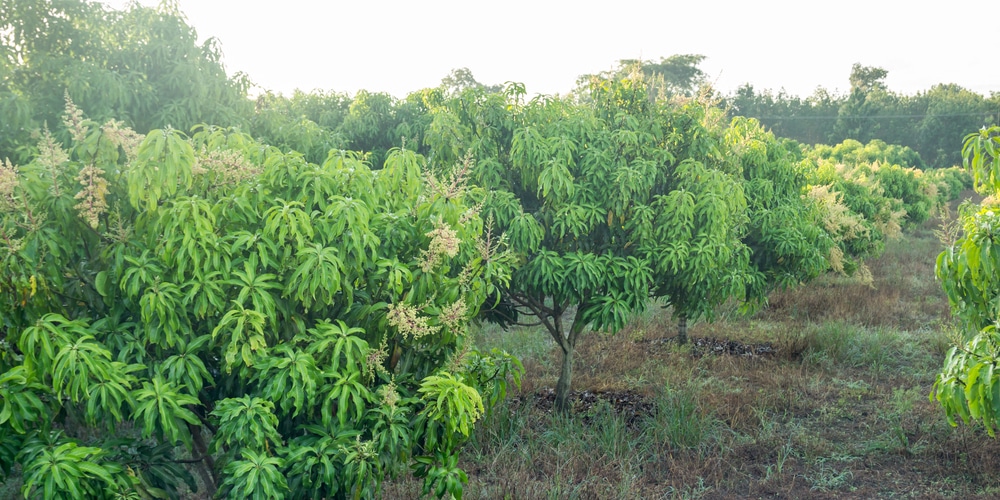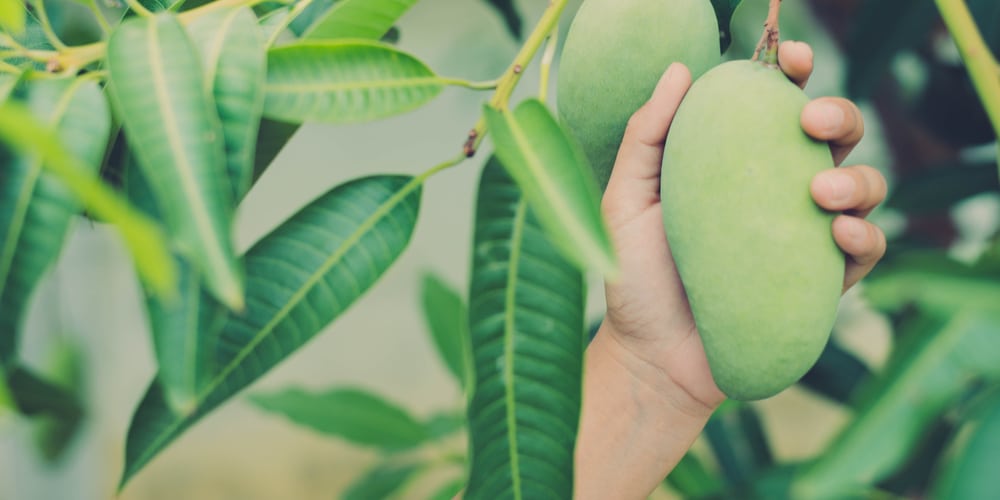Mangos are tall, attractive trees that produce delicious sweet fruits. In the right climate, mango trees can get huge. They are likely to grow up to eighty feet tall and forty feet wide. To grow a healthy mango tree that’s thriving, you’ll need a large area of land. Once it’s planted, there are many reasons why a mango tree may be dropping leaves.
Many homeowners don’t have the space to grow a mango tree to maturity, but some still have success growing a tree in a smaller area or even in a large pot. Growing a mango tree in a pot or smaller space will stunt its growth, but the tree may still produce fruit.
Mangos trees are broadleaf evergreens which means they are green year-round and don’t drop their leaves in fall. They do, however, create leaf litter and will sometimes drop some or all of their leaves. Let’s look at the most common reasons that mango trees drop their leaves.
Mango trees growth and foliage

Mango trees are relatively fast-growing and can quickly become very large. They have a symmetrical canopy that looks nice and has dense foliage. Mango trees are classified as evergreens, which means they won’t drop their leaves during the fall and winter as many trees do.
Mango fruit is not citrus. It’s a tropical fruit. If you grow a mango tree, you’ll have a nice green canopy in your yard year-round.
Mango trees have oblong shaped leaves which feel leathery to the touch and are alternately arranged. The leaves can grow anywhere from six to sixteen inches long and are a dark green color when mature. Younger leaves have a pink, yellow or reddish tinge. Leaves have a lighter green underneath.
As mango trees are evergreens, their leaves stay on the tree and will live for up to five years. They grow in clusters and have well-defined horizontal veins.
Why do mango trees drop their leaves?
Mango trees do drop the odd leaf now and again, and you may find that there are lots of fallen leaves surrounding the base of your tree. This is perfectly normal. Many homeowners find themselves raking up mango leaves, flowers, twigs, and fallen fruit regularly.
Mango trees are considered to be messy, as they often drop leaves. If you want to avoid having to rake up leaves constantly, you should plant the tree in an area where there are low-growing shrubs or other plants, as these will hide the litter from your mango tree.
If you don’t pick the fruit from your mango tree, it’s likely to drop the fruit when it becomes overly ripe. While mango’s drop a few leaves here and there, it isn’t generally noticeable. If your mango tree is dropping all its leaves and starting to look bare, this indicates that there’s a problem with the tree. Here are some of the most common reasons that mango trees drop their leaves:
The climate is too cold
Mango trees are the perfect fruit tree to grow in warm frost-free climates. They thrive in USDA zones 9b through to 11. If you live in a cooler climate, you may be able to grow a mango tree, but, likely, it won’t do so well, especially in the winter. If you live in a colder climate zone and have a mango tree that’s losing its leaves, it’s probably affected by the cold.
Wind
If you live in a windy, coastal location, the wind may be affecting your mango tree and causing it to lose its leaves. If you’re already growing a mango tree, you may like to shelter it by building a windbreak if exposure to the wind makes the leaves fall off.
If you’re thinking about planting a mango tree and live in a windy area, it’s a wise idea to grow your mango tree in a sheltered location. Look for the warmest part of your yard, which is likely to be the south side of your house.
Heat
While mango trees like a warm climate, they sometimes suffer if it’s too hot. If you’re trying to grow a mango tree in a very hot or humid desert location, it may suffer and drop its leaves. In hot regions, mango trees should be planted on the north side of your yard, as this is likely to be the coolest place. Mangos do better in hotter regions if they are in the shade for at least part of the day. They may get shade from your house, an outbuilding, or from another tree.
Powdery mildew
Powdery mildew is a white fungal growth that can affect mango trees. If your trees are affected, their leaves will start to turn a powdery white in the spring during dry weather. The leaves will begin to wilt, and the fungal disease will cause them to die and fall off the tree. If your tree is severely affected by powdery mildew, the entire tree will become defoliated.
High soil salinity
Mango trees that are grown in high saline soil are prone to developing yellowish-brown spots on the tips of the leaves. This is known as leaf burn and can cause the leaves to fall off the trees.
Fertilizer burn
Mango trees are sensitive and can be affected by fertilizer burn, which can kill the leaves and roots. If you give a mango tree a potent fertilizer or use too much, your tree may suffer from fertilizer burn and lose its leaves.
Things to consider when growing a mango tree
If you live in the correct climate, you’ll be able to grow a mango tree with the correct care and attention. There are, however, some things you should consider before planting your tree, such as its location. Here are some things you may like to take into account.
- Consider the tree mature size before planting
- Don’t plant mango trees near powerlines or other structures
- Grow mango trees where they will get good air circulation, as this will make them less prone to disease.
- Only grow mangos if you live in the right climate: USDA zones 9b through to 11 (here’s how tell what zone you are in)
- Many people are allergic to the flowers on mango trees
Conclusion: Mango Leaves Drop for Many Reasons
There are many reasons that your mango tree’s leaves may be dropping off. The most common reason is due to the wrong type of climate. If your tree is getting too hot or too cold, it’s likely to lose its leaves. Mango trees can also suffer from a fungal disease called powdery mildew and from a condition called leaf burn if the soil is too salty.
Mango trees are generally considered a hardy species that don’t suffer from many diseases and thrive in USDA zones 9b through to 11.
It’s also worth noting that mangos are considered messy trees as they drop leaves, twigs, and fruit often. If your trees are losing leaves, it may be completely normal and nothing to worry about.

